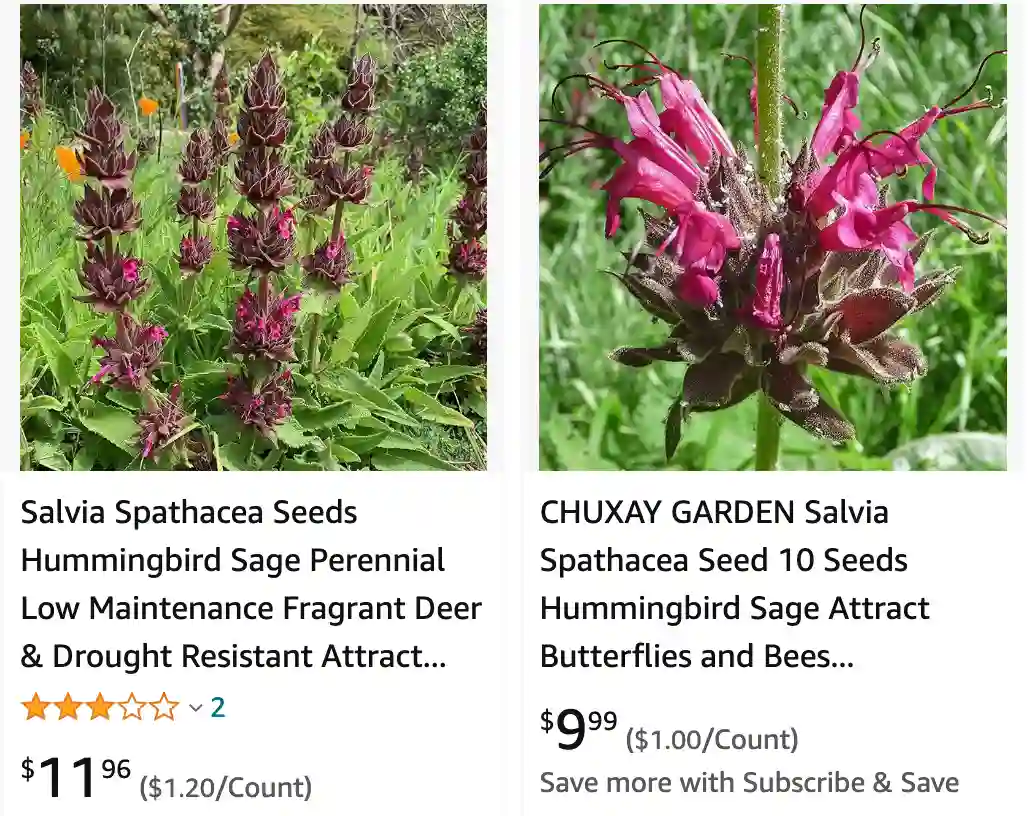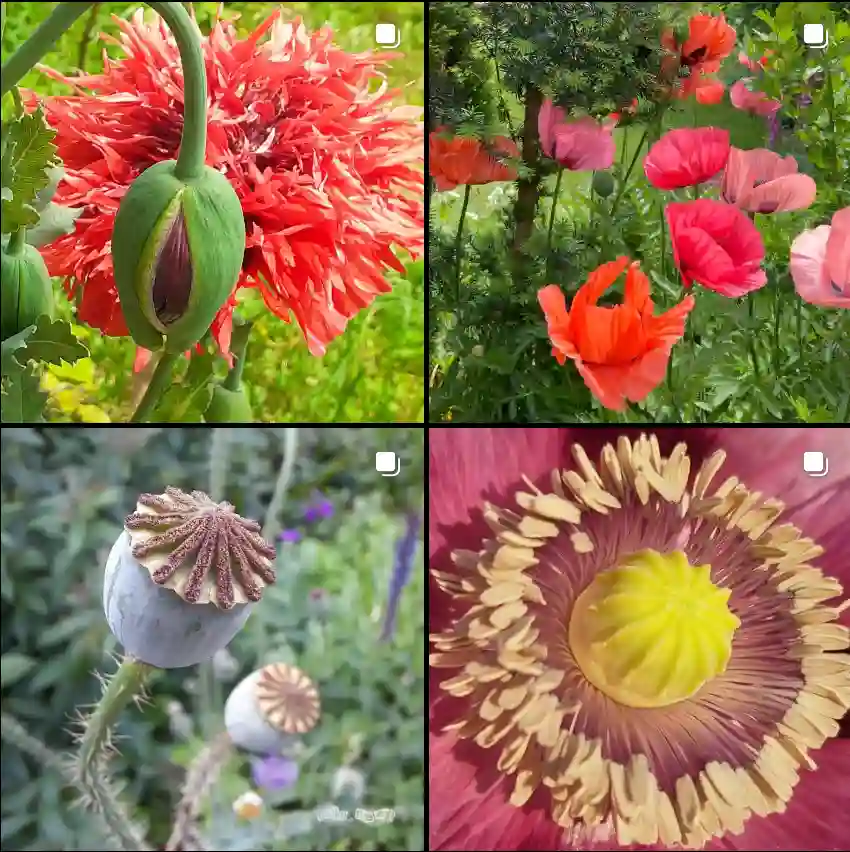
My Love Affair with Salvia Spathacea: A California Native Beauty
Ever since I got into gardening, I’ve been drawn to plants that are not only beautiful but also well-suited to my climate. That’s how I stumbled upon Salvia spathacea, also known as the California Hummingbird Sage or Pitcher Sage. This native Californian perennial has become a star in my garden, and I’m here to share my experience with you!
This charming plant boasts stunning, tubular flowers that come in shades of magenta, attracting hummingbirds like magnets. Plus, its aromatic, slightly wrinkled leaves add a touch of texture and interest to any garden bed. But Salvia spathacea’s appeal goes beyond aesthetics. It’s a low-maintenance plant that thrives in our dry summers and offers year-round beauty.
Intrigued? Let’s delve deeper into the wonderful world of Salvia spathacea!
1050 Species in Genus Salvia
What Makes Salvia Spathacea So Special?
There are many reasons to fall in love with Salvia spathacea. Here are just a few:
- Hummingbird Magnet: As the name suggests, this sage attracts hummingbirds with its vibrant flowers and nectar-rich blooms. Watching these tiny, feathered jewels flit around your garden is a delightful experience.
- Low-Maintenance: Salvia spathacea is a dream for busy gardeners like myself. It’s drought-tolerant and requires minimal watering once established.
- Evergreen Appeal: Unlike many perennials, Salvia spathacea maintains its foliage throughout the year, providing a splash of color even in the cooler months.
- Adaptable Beauty: This versatile plant thrives in both full sun and partial shade, making it suitable for a variety of garden situations.
- Fragrant Foliage: The leaves of Salvia spathacea have a subtle, pleasant scent that adds another layer of sensory enjoyment to your garden.
How to Grow Salvia Spathacea?
Growing Salvia spathacea is a breeze! Here’s a step-by-step guide:
- Choosing the Right Spot: Select a location that receives full sun to part shade. Although it tolerates a range of light conditions, Salvia spathacea will produce the most flowers in a spot with at least 6 hours of direct sunlight daily.
- Soil Preparation: Salvia spathacea prefers well-draining soil. Amend your existing soil with compost or sand if necessary to ensure good drainage.
- Planting: You can plant Salvia spathacea from seeds, cuttings, or containerized plants. For seeds, sow them indoors 6-8 weeks before the last frost and transplant them outdoors once the danger of frost has passed. Cuttings can be taken in spring or summer. When planting containerized plants, dig a hole slightly larger than the pot and loosen the surrounding soil. Place the plant in the hole, ensuring the root crown sits level with the soil surface, and backfill the hole. Water thoroughly.
- Watering: Water your Salvia spathacea regularly, especially during the first year after planting. However, once established, it’s quite drought-tolerant and can survive on minimal rainfall. Water deeply when the soil feels dry to the touch, allowing the soil to dry out completely between waterings.
- Fertilizing: This low-maintenance plant doesn’t require heavy feeding. A light application of a balanced fertilizer in spring can be beneficial, but it’s not essential.
How to Care for Salvia Spathacea?
Taking care of Salvia spathacea is simple. Here’s what you need to know:
- Deadheading: To encourage continuous flowering, deadhead spent blooms by pinching them off at the base. This will prevent seed formation and promote new flower production.
- Pruning: You can prune Salvia spathacea in late winter or early spring to maintain its desired size and shape. However, heavy pruning isn’t necessary.
- Pests and Diseases: This resilient plant is generally pest- and disease-resistant. However, keep an eye out for common garden pests like aphids or mealybugs. If spotted, treat them with organic insecticidal soap or neem oil spray.
How to Propagate Salvia Spathacea?
Want to expand your Salvia spathacea collection? Here are two easy propagation methods:
- Division: Divide established plants in spring or fall. Carefully dig up the plant and use a sharp knife to divide it into several sections, each with healthy roots and foliage. Replant the divisions in separate locations and water them well.
- Cuttings: Take stem cuttings in spring or summer. Choose healthy, non-flowering stems with a few nodes. Cut them just below a node and remove the lower leaves. Dip the cut ends in rooting hormone (optional but can improve success rate) and plant them in a pot filled with a well-draining potting mix. Keep the soil moist but not soggy and place the pot in a location with indirect sunlight. With proper care, your cuttings should root within a few weeks. Once established, you can harden them off and transplant them into your garden.
What to Plant With Salvia Spathacea?
Salvia spathacea is a versatile garden companion that blends beautifully with various plants. Here are some ideas:
- Grasses: Ornamental grasses like feather reed grass (Calamagrostis spp.) or blue fescue (Festuca glauca) provide a textural contrast and add movement to the garden.
- Daisies: Daisies like Shasta daisy (Leucanthemum x superbum) or Swan River daisy (Bracteantha bracteata) create a cheerful and colorful combination.
- Lavender: Lavender (Lavandula spp.) complements Salvia spathacea’s color scheme and adds another layer of fragrance to the garden.
- California Native Plants: Create a California native plant haven by pairing Salvia spathacea with other drought-tolerant beauties like yarrow (Achillea millefolium), California poppy (Eschscholzia californica), or coyote bush (Baccharis pilularis).
With its stunning blooms, low-maintenance nature, and hummingbird-attracting charm, Salvia spathacea is a true gem for any California garden. So why not give this California native a try and experience its magic for yourself?
If i die, water my plants!



